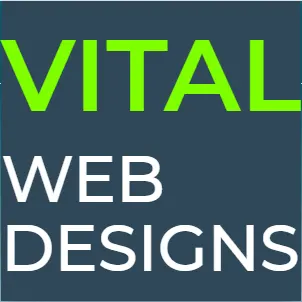We identify your competition and company's goals, then develop a strategy to achieve those goals.
✔ Analyze your competition
✔ Identify target demographics
✔ Create a plan
We work closely with you to understand your business and write interesting content.
✔ Professional content writing
✔ Content organization
Home page design layout options are presented for client approval, followed by secondary page layouts.
✔ Custom Web Designs using best SEO
✔ Photography and retouching
Our custom sites are programmed in HTML with CSS and Javascript actions and lean coding to maximize speeds.
✔ Optimized for fast load times
✔ Images/videos optimized speeds
Our websites are designed to function perfectly on any device. It will look great on any cellphone, pad, or computer.
✔ Mobile-friendly website
Our team will work closely with you to understand your business and craft compelling content.
✔ Keyword research
✔ Unique / relevant copy
ADA standards accessible design because we believe that the disabled deserve a great user experience on your website.
✔ From hosting to security updates we’re here to keep your website running fast and uninterrupted.
✔ Lightning fast hosting
✔ Ongoing website management
Designing the visual aspects of a website is an essential part of creating an appealing and user-friendly online presence. Here are some steps and considerations for designing the visual elements of your website:
1. Understand your brand: Start by understanding your brand identity, including your logo, color palette, typography, and overall brand personality. This will serve as a foundation for your website design and ensure consistency with your offline and online branding.
2. Determine the website's layout: Plan the layout of your website, considering the placement of key elements such as the logo, navigation menu, header, footer, and content sections. Sketch or wireframe the layout to visualize the structure and organization of the page.
3. Choose an appropriate color scheme: Select a color scheme that reflects your brand and creates the desired mood or atmosphere for your website. Consider the psychological impact of colors and ensure they are visually appealing and accessible. Limit the number of colors to maintain a cohesive and harmonious design.
4. Select suitable typography: Choose fonts that are legible and align with your brand identity. Consider using a combination of fonts, such as a headline font and a body text font, to create visual hierarchy and enhance readability. Ensure that the chosen fonts are web-safe and accessible across different devices and browsers.
5. Create a visually engaging interface: Design the user interface (UI) elements, such as buttons, forms, and menus, to be visually appealing and intuitive. Use appropriate spacing, alignment, and sizing to create a balanced and harmonious design. Consider using visual cues, such as hover effects and animations, to provide feedback and enhance interactivity.
6. Use imagery and graphics: Incorporate high-quality images, illustrations, icons, and other visual elements to enhance the visual appeal and convey your message effectively. Ensure that the visuals are relevant, optimized for web viewing, and align with your brand's style and tone.
7. Ensure responsive design: Design your website to be responsive, meaning it should adapt and display properly on various devices and screen sizes, including desktops, tablets, and mobile phones. Test your design across different devices to ensure a consistent and user-friendly experience.
8. Consider usability and user experience (UX): Prioritize usability and user experience by designing intuitive navigation, clear calls to action, and easy-to-understand interfaces. Ensure that users can find information easily, and the website's functionality is intuitive and user-friendly.
9. Test and gather feedback: Conduct usability testing to evaluate the effectiveness of your design. Gather feedback from target users to identify any areas that need improvement. Iteratively refine your design based on the insights gained from testing and feedback.
10. Document and communicate design guidelines: Once your design is finalized, create a style guide or design system that documents the visual elements, typography, colors, and usage guidelines. This ensures consistency across different pages and future updates to your website.
Remember that web design is a creative process, and it's essential to balance aesthetics with usability and functionality.
Regularly review and update your design to stay current with design trends and evolving user preferences.
